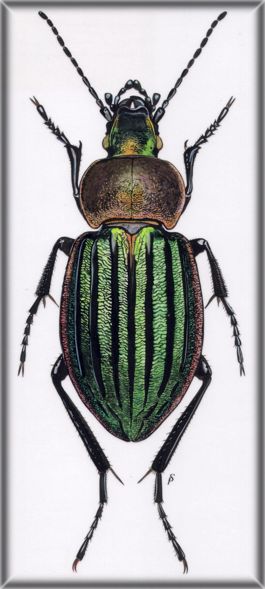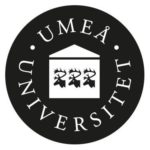SEAD - Strategic Environmental Archaeology Database
Principle author: Philip Buckland
Additional contributors: See original database for a list of contributors - over 1,400 publications
Contributing institution: Umeå University
Publisher: Umeå University
Date Created Begin: 2008
Date Created End: Ongoing
Spatial Coverage: Argentina, Austria, Belgium, Bermuda, Canada, Canary Islands, Channel Islands, Chile, China, Croatia, Czech Republic, Denmark, Egypt, England, Faroes, Finland, France, Germany, Greece, Greenland, Hungary, Iceland, Iran, Iraq, Ireland, Israel, Italy, Japan, Latvia, Morocco, Netherlands, Norway, Oman, Peru, Poland, Russia, Scotland, Slovakia, Slovenia, Spain, Sudan, Sweden, Switzerland, Turkey, Ukraine, USA, Wales
Temporal Coverage: 5,334,950 BCE-2000 CE
Subject List (FISH Vocabularies): Archaeological Objects: Insect Remains, Parasite Remains; Archaeological Sciences: Palaeoentomology, Palaeoenvironmental Analysis, Amino Acid Racemisation, Archaeomagnetism, Biostratigraphy, Dendrochronology, Electron Spin Resonance, Fission Track Analysis, Fluorine, Uranium And Nitrogen Tests, Lead Isotope Dating, Luminescence Dating, Mitochondrial DNA, Obsidian Hydration, Oxygen Isotope Analysis, Potassium Argon Dating, Radiocarbon Dating, Tephrochronology, Uranium Series Dating, Infra-red Stimulated Luminescence, Optically Stimulated Luminescence, Thermoluminescence, Microscopy, Beach Deposit, Geological Sediment, Peat Deposit, Flotation, Hand Retrieval, Coprolite, Pottery, Tufaceous Deposit, Impression; Events: Archaeological Intervention, Evaluation, Test Pit, Trial Trench, Underwater Evaluation, Excavation, Box Trenching, Open Area Excavation, Rescue Excavation, Research Excavation, Underwater Excavation, Grab Sampling, Environmental Intervention, Borehole Survey, Environmental Sampling, Core Sampling, Gravity Core, Vibro Core, Monolith Sampling, Casual Observation, Non Archaeological Intervention, Borehole Survey; Historic Characterization: Aggregates Quarry, Ancient Enclosure, Ancient Woodland (Broadleaved), Ancient Woodland (Coniferous), Ancient Woodland (Mixed), Ancient Woodland (Replanted), Ancient Woodland, Barracks, Battlefield, Blanket Bog, Bog, Brickearth Pit, Canal, Carr, Carr, Castle, Castle, Cathedral, Cemetery, Chapel, Church, City, Clay Extraction Site, Clay Pit, Coastal And Intertidal, Coastal Wetland, Coastal Wetland, Copper Mine, Country Sport, Croft, Deer Park, Dunes, Dwelling, Enclosure Of Parkland, Extractive Industry, Farmstead, Field System, Fishing, Flash, Flood And Erosion Defence, Foreshore, Fortification, Freshwater Body, Funerary, Garden, Grassland, Groynes, Harbour, Health, Heathland, Hillfort, Hillfort, Historic Urban Core, Hospital, House, Infields, Inland Waterway, Isolated Dwelling, Isolated Farm, Lagoon, Lagoon, Lake, Managed Heritage Asset, Manor Farm, Manufacturing Industry, Market Place, Market, Marsh, Marsh, Marsh, Meadow, Mere, Military Residence, Mill Water System, Mill, Mine, Moorland, Moorland, Moorland, Mountain, Mudflat, Mudflat, Nucleated Settlement, Outfields, Palace, Palaeochannel, Palaeolandscape Component, Park, Peat Deposit, Peat Deposit, Peatland, Place Of Worship, Pond, Port And Dock Installation, Port, Processing Industry, Quarry, Raised Bog, Reclaimed Land, Religion, Residential Area, River, Road, Roman Fort, Roman Fort, Rough Ground, Royal Forest, Saltmarsh, Saltmarsh, Sandflats, Sea Defence, Shoals And Flats, Smallholding, Smallholding, Stone Quarry, Storage And Handling, Submerged Forest, Town Wall, Town, Upland, Valley Bog, Warehousing, Waste Disposal, Water Meadow, Water Transport, Watercourse, Wetland, Wood Pasture, Woodland (Broadleaved), Woodland (Coniferous), Woodland (Mixed)
Relation:Buckland, P.I. & Buckland, P.C. (2006). BugsCEP Coleopteran Ecology Package. IGBP PAGES/World Data Center for Paleoclimatology Data Contribution Series # 2006-116. NOAA/NCDC Paleoclimatology Program, Boulder CO, USA. URL:http://www.ncdc.noaa.gov/paleo/insect.html or http://www.bugscep.com
Language: English
Format: jSON
Type: Collection
Creative Commons Licensing: CC BY
Collection method(s): Soil samples, Core samples, Opportunistic samples
Objects/samples collected: Insect fragments, Arthropod fragments
Why are you collecting this data/overall objective?: Fossil insects are collected to help understand past environments, climates, and human activities.
How will you use this data?: As a proxy for past environmental conditions
Important points of interest within data: Insects respond rapidly to climate change, and were the first fossil group to be used to show the rapid rise of temperatures after the last Ice Age. Fossil parasites help us track the spread of diseases and track past changes in human and animal health. Many insects are sensitive to environmental change, and past changes in biodiversity can help us understand how environments have changed, or been changed, in the past, and thus predict how biodiversity will react to future changes in the environment.
Publications About SEAD
Buckland P.I., Sjölander M., Eriksson E.J. (2018) Strategic Environmental Archaeology Database (SEAD). In: Smith C. (eds) Encyclopedia of Global Archaeology. Springer, Cham. Publication link
Buckland, P. I. 2014. SEAD – The Strategic Environmental Archaeology Database. Inter-linking multiproxy environmental data with archaeological investigations and ecology. In: Graeme Earl, Tim Sly, Angeliki Chrysanthi, Patricia Murrieta-Flores, Constantinos Papadopoulos, Iza Romanowska & David Wheatley (Ed.), CAA2012, Proceedings of the 40th Annual Conference of Computer Applications and Quantitative Methods in Archaeology (CAA), Southampton, England. Amsterdam. Download pdf here
Buckland, P.I., Eriksson, E.J. & Palm, F. 2014. SEAD – The Strategic Environmental Archaeology Database, Progress Report Spring 2014. MAL reports nr. 2014-13. Environmental Archaeology Lab. Umeå University. 46 pp. Download pdf here.
Buckland, P.I. 2011. Freeing information to the people. International Innovation, EuroFocus, 2011 Issue 4: Nordic Spotlight, pp. 51-53. Download pdf here or see the whole issue here
Buckland, P.I. 2010. Environmental Archaeology, Climate Change and E-Science. Skytteanska Samfundets årsbok, Thule. Download pdf here
Buckland, P.I. 2010. SEAD – The Strategic Environmental Archaeology Database. An international research cyber-infrastructure for studying past changes in climate, environment and human activities. Journal of Northern Studies. No.1 2010. Download pdf here
Buckland, P.I., Eriksson, E.J., Linderholm, J., Viklund, K., Engelmark, R., Palm, F., Svensson, P., Buckland, P.C., Panagiotakopulu, E. & Olofsson, J. 2010. Integrating Human Dimensions of Arctic Palaeoenvironmental Science: SEAD – The Strategic Environmental Archaeology Database. Journal of Archaeological Science, 38 (2), pp. 345-351. Download pdf here or Publication link
Buckland, P. I., Olofsson, J. & Engelmark, R. 2006. Planning Report: SEAD. Strategic Environmental Archaeology Database. MAL rapports nr. 2006-031. Environmental Archaeology Lab. Department of Archaeology & Sámi Studies. Download pdf here
Meissner, K., Buckland, P.I., Linderson, H. & Hammarlund, D. 2012. Pilotprojekt ”Dendro-databas” i SEAD April 2012-juni 2012. MAL rapporter nr. 2012-23. Umeå universitet & Lunds universitet. (In Swedish). Download pdf here
Palm, F. 2009. Abstracting query building for multi-entity faceted browsing. Lecture Notes in Computer Science, 2009, Volume 5822/2009, 53-63. Publication link
Publications Citing SEAD
Karlsson, N. (2017). Kulturmiljöer och klimat i Västerbottens län?: analys av konsekvenserna av ett förändrat klimat (Miljöarkeologiska Laboratoriets Rapporter). Umeå: Umeå Universitet. Retrieved from Publication link
Vickers, K. & Buckland, P.I. 2015. Predicting island beetle faunas by their climate ranges – the tabula rasa/refugia theory in the North Atlantic. Journal of Biogeography. Publication link
Buckland, P.I. 2014. The Bugs Coleopteran Ecology Package (BugsCEP) database: 1000 sites and half a million fossils later. Quaternary International Special Issue: Russell Coope Honorary volume. Publication link
Buckland, P.I. & Buckland, P.C. 2014. BugsCEP, an entomological database twenty-five years on. Antenna (Journal of the Royal Entomological Society) 38(1), 21-28.
Richards, J. D., Niven, K., & Jeffrey, S. 2013. Preserving Our Digital Heritage: Information Systems for Data Management and Preservation. In Visual Heritage in the Digital Age (pp. 311-326). Springer London.
Buckland, P.I. & Buckland, P.C. 2012. Species found as fossils in Quaternary sediments. In Duff, A.G., Checklist of Beetles of the British Isles, 2nd Edition. A.G. Duff, Wells, Somerset, United Kingdom. pp. 127-130. Publication link
Buckland, P.I., Buckland, P.C. & Olsson, F. 2014. Paleoentomology: Insects and other Arthropods in Environmental Archaeology. In Smith, C., Lanteri, C., Reid, J., Smith, J. & Krauss, T.M. (in press). The Encyclopedia of Global Archaeology. Springer.
Grabowski, R. 2011. Changes in cereal cultivation during the Iron Age in southern Sweden: a compilation and interpretation of the archaeobotanical material. Vegetation History and Archaeobotany, 20(5), 479-494. Publication link
Reitz, Elizabeth J. & Shackley, Myra. 2012. Environmental Archaeology. Manuals in Archaeological Method, Theory and Technique. Springer. ISBN: 978-1-4614-3337-8 (Print) 978-1-4614-3339-2 (Online). Publication link
Poster: The Polar Archaeology Network Global 2011. Climate Change and the Polar Archaeological Record: Report on a Recent Workshop
Poster: The Strategic Environmental Archaeology Database: a resource for international, multiproxy and transdisciplinary studies of environmental and climatic change. At The XIX INQUA Congress Quaternary Perspectives on Climate Change, Natural Hazards and Civilization, Nagoya, Japan. Publication link
Publications Using or Referring to SEAD
Eriksson, T. & Lindahl, A. 2013. The Handicrafts of Iron Age Pottery in Scandinavia: Regionalities and Traditions. Lund Archaeological Review 18 (2012), pp. 45-60
For publications using the BugsCEP database or Bugs dataset, whilch is now ingested into SEAD, click here.
Description: The SEAD dataset is a database of proxy evidence for past environments, climates and human activities. It makes data available from archaeological and geological excavations and includes a range of fossil types as chemical and physical measurements from similar contexts. This feed to DataARC includes the environmental interpretation of fossil insect finds. Rather than presenting the raw data (in terms of numbers of individuals of the species found fossil), the dataset provides the meaning of the data in terms of the habitats which supported the species. In this way, the data can be more easily mapped to other data sources through common terms. The dataset includes the entire European fossil insect record and stretches back to at least the last million years. Most of the data are, however, from the last few millennia.
Retrieve full project and record-level metadata for SEAD - Strategic Environmental Archaeology Database on Github.



